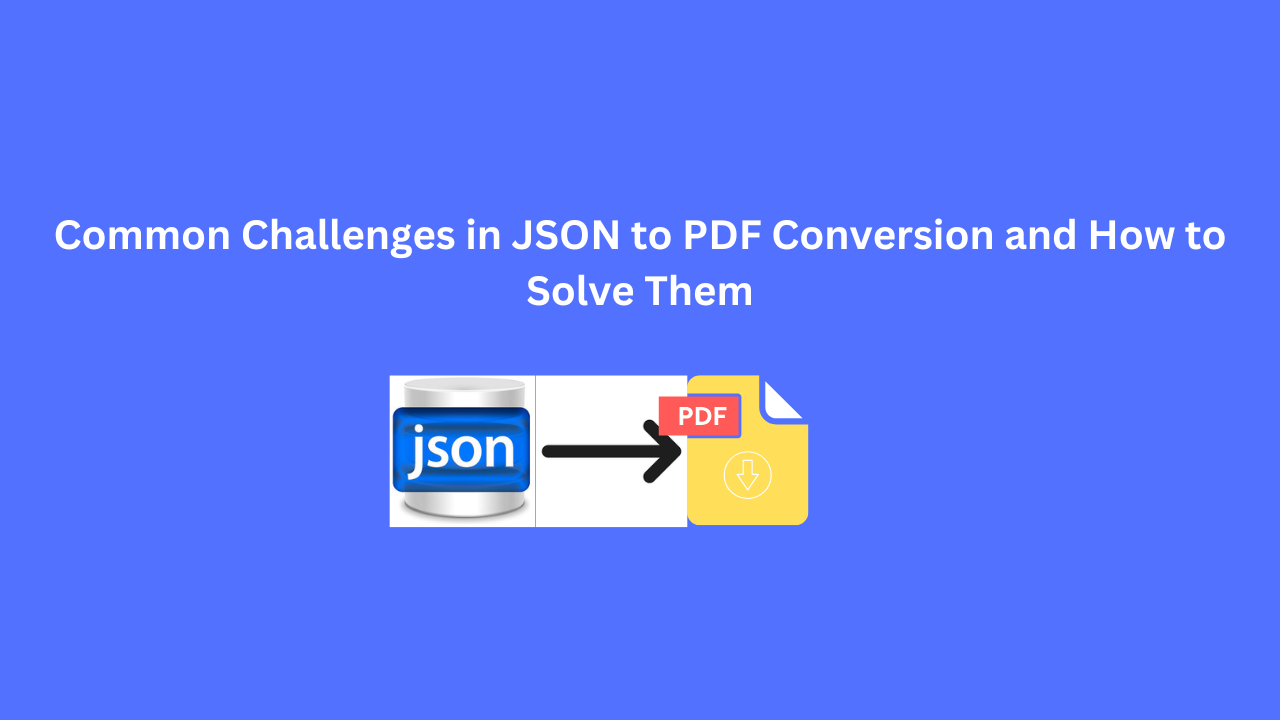This article discusses general difficulties in Converting JSON to PDF and how these can affect the process, along with workable solutions for overcoming them. A developer, data analyst, or business professional might want to refer to the information below to ensure smoother processes for JSON-to-PDF conversions.
JSON is now the de facto format for exchanging data across applications due to its simplicity and flexibility. However, Converting JSON to PDF—a structured, visually formatted, and shareable file type—presents a different set of challenges. This is critical for businesses dealing with invoices, reports, or legal documents, where PDF ensures cross-platform consistency and a polished look. But this seemingly simple task comes with hurdles.
What Makes JSON to PDF Conversion Necessary?
JSON is Lightweight and ideal for data storage and transmission, but it lacks a human-readable presentation format. PDF, on the other hand, is perfect for presenting data in a visually appealing and print-friendly manner. Here’s why JSON-to-PDF conversion is essential:
Professional Presentation: Reports, invoices, or forms look polished in PDF.
Cross-Platform Consistency: PDFs retain formatting, regardless of device or software.
Safe Sharing: PDFs support password protection and encryption.
Archival Standards: PDFs adhere to archival formats such as PDF/A, ensuring it is readable over long periods.
However, there are various technical and practical issues when converting JSON to PDF.
Top JSON to PDF Conversion Challenges
1. Mapping Complexity of Data
The JSON data is typically highly nested and hierarchical. Translating this data to a structure of a PDF, which is linear in nature, can be complicated.
Sample Problem:
Consider Transforming a JSON object like the following one: ”
invoice”: {
”id”: ”12345”,
”date”: ”2024-11-28”,
”items”: [
{”name”: ”Laptop ”, ”price”: 1200, ”quantity”: 2},
{”name”: ”Mouse”, ”price”: 50, ”quantity”: 1}
],
”total”: 2450
}
Creating a PDF that organizes this data into a structured format, for example, tables, requires logical mapping and formatting logic.
Solution
Use libraries such as Apache FOP or Pandas (Python) to preprocess the JSON data and convert it into tabular structures.
Implement custom Scripts to flatten nested JSON objects for easy mapping.
2. Formatting and Styling Challenges
PDF is not inherently dynamic; its content must be styled explicitly. This is a problem when JSON contains dynamic data.
Example:
An invoice PDF may require:
Tables for itemized lists.
A company logo and header at the top.
Specific font sizes and alignment.
Dynamic data in JSON, like variable-length tables or unstructured content, complicates consistent formatting.
Solution:
Use CSS-like tools provided by libraries such as wkhtmltopdf or iText. These allow fine-grained styling during conversion.
Implement responsive design Logic to adjust the font sizes and Layouts according to the content length.
3. Handling Large JSON Files
Large JSON datasets, for example, sales reports or multi-page invoices, could be too heavy for conversion, resulting in timeouts or memory issues.
Example
A JSON file with thousands of sales records may demand multi-page PDFs with proper pagination.
Solution
Chunk Large Data: JSON data should be divided into small chunks before processing.
Use libraries such as PDFKit or FPDF with pagination Logic to handle multi-page PDFs efficiently.
Optimize performance by using Asynchronous processing frameworks such as Node.js Streams.
4. Handling Unsupported Characters
JSON often contains special characters, emojis, or foreign-language text that may not render correctly in PDFs.
Example:
A JSON object with Chinese, Arabic, or Cyrillic text may result in garbled PDF output if the proper font is not embedded.
Solution:
Ensure Unicode-compliant fonts are used during the PDF generation process.
Tools like PDF.js and WeasyPrint support multiple languages and character sets.
Test your PDFs extensively with real-world data to identify character rendering issues.
5. Integration with Existing Workflows
For many organizations, JSON to PDF conversion must integrate seamlessly into larger workflows, such as automated invoicing or customer reporting.
Example Problem:
An e-commerce platform may need to:
Fetch order details as JSON.
Convert them into PDFs.
Email the created PDFs to customers.
This should also be done with seamless integration using APIs and Automation tools.
Solution:
Use platforms such as Zapier or Make (formerly Integromat) to automate the JSON-to-PDF workflows.
Use open-source libraries such as ReportLab for Python or jsPDF for JavaScript to integrate conversion with existing systems.
Use cloud-based services such as Google Cloud Functions or AWS Lambda to automate serverless.
6. Error Handling and Validation
JSON data may contain errors, missing fields, or invalid structures, which can cause the conversion process to fail.
Example:
An invoice JSON missing the total field may generate an incomplete or incorrect PDF.
Solution:
Validate JSON schemas using tools like AJV (Another JSON Validator) before initiating the conversion.
Implement error-catching mechanisms to flag incomplete or malformed JSON files for manual correction.
7. Security Concerns
Sensitive information in JSON files—such as financial data—will leak out if the conversion is not secure.
Example
Converting sensitive JSON data into PDFs on a third-party server will leak your data.
Solution
Perform JSON-to-PDF conversion locally to avoid leakage.
Use Encryption tools to ensure that both JSON input and PDF output files are secured.
Use secure libraries like PyPDF2 for Python or PDF.js for JavaScript. These libraries allow password protection of PDFs.
Best Tools for JSON to PDF Conversion
Here’s the list of the most helpful tools to speed up your workflow:
4. iText (Java)
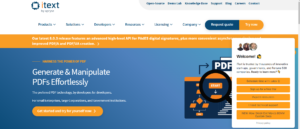
Fantastic to use for programmatically generated PDFs.
Supports high-level features such as digital signatures and encryption
Challenge Addressed: Formatting and styling.
3. wkhtmltopdf

HTML and CSS to PDF.
Best for JSON, first converted to HTML
Challenge Addressed: Dynamic formatting
2. ReportLab (Python)
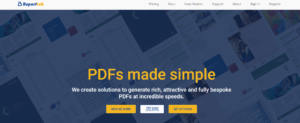
Very customizable Generator tool for PDFs.
Ability to have a very strict layout and design.
Challenge Addressed: Data mapping and integration
1. SmallPDFFree

An efficient online converter from JSON data to PDF .
JSON files are uploaded, formatted, and professional-quality PDFs can be generated in no time at all.
Problem Solved: Large dataset and integration with workflow.
Steps to Follow:
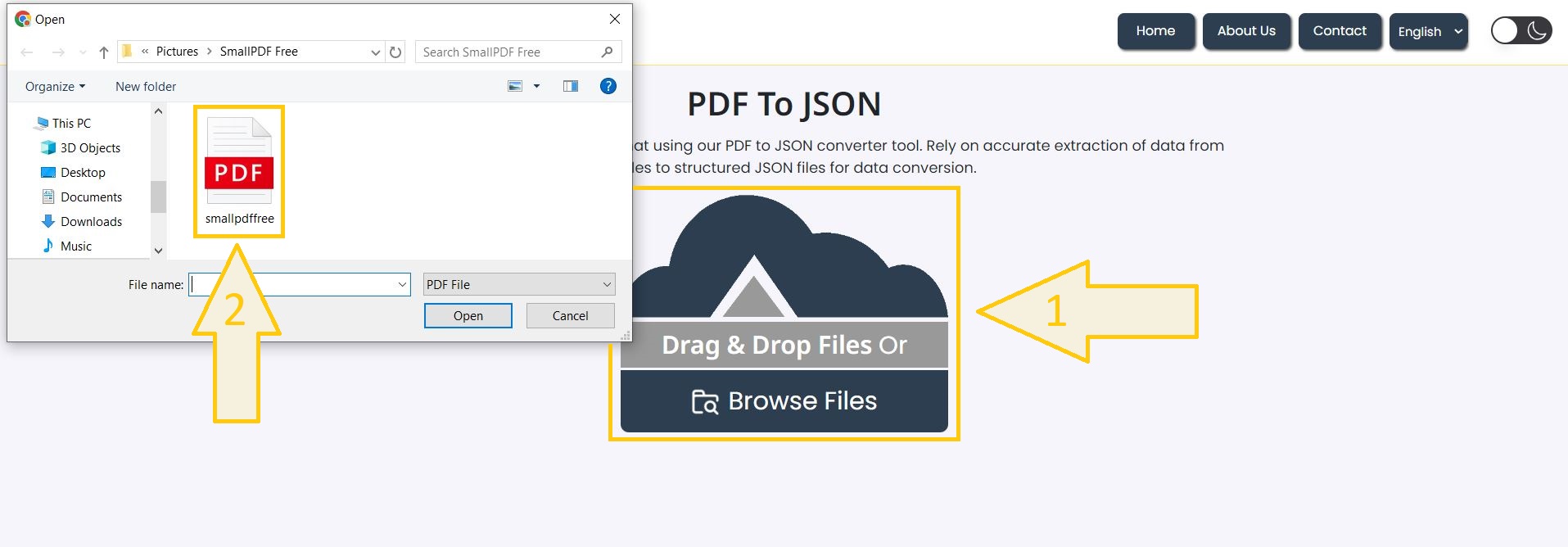
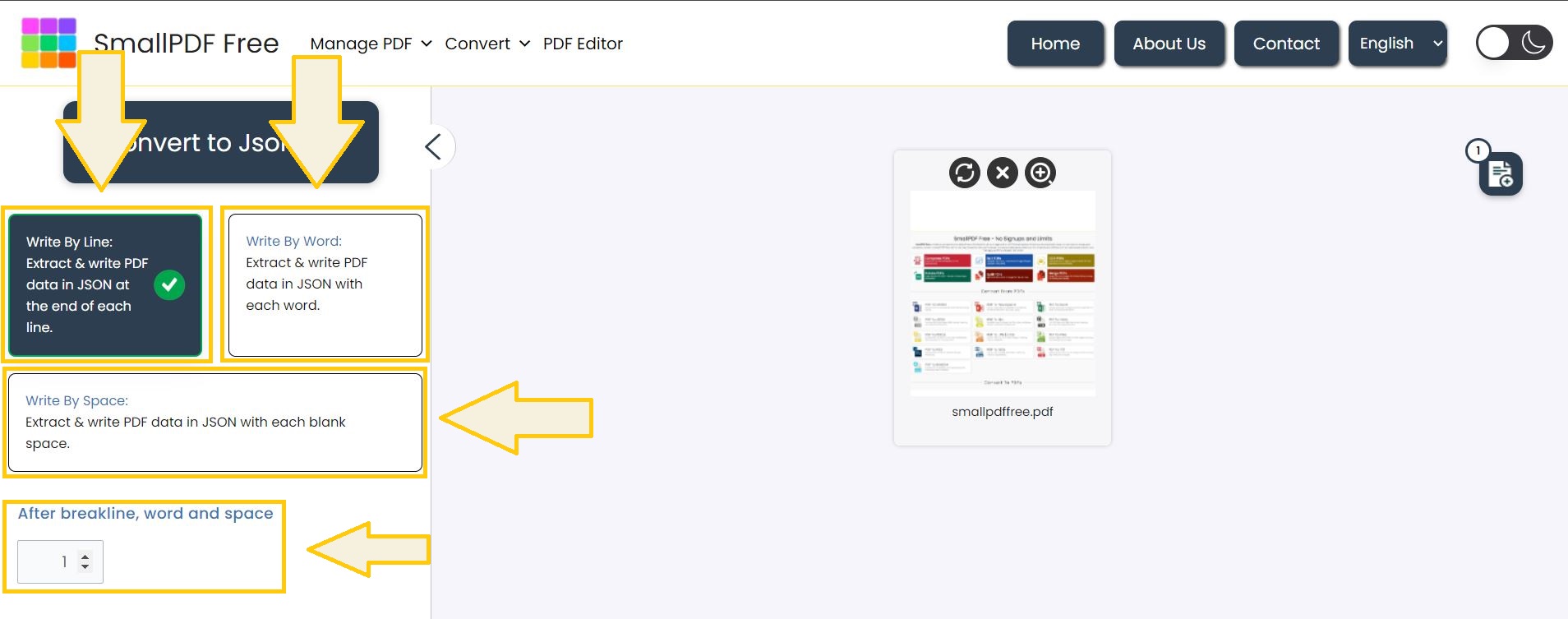
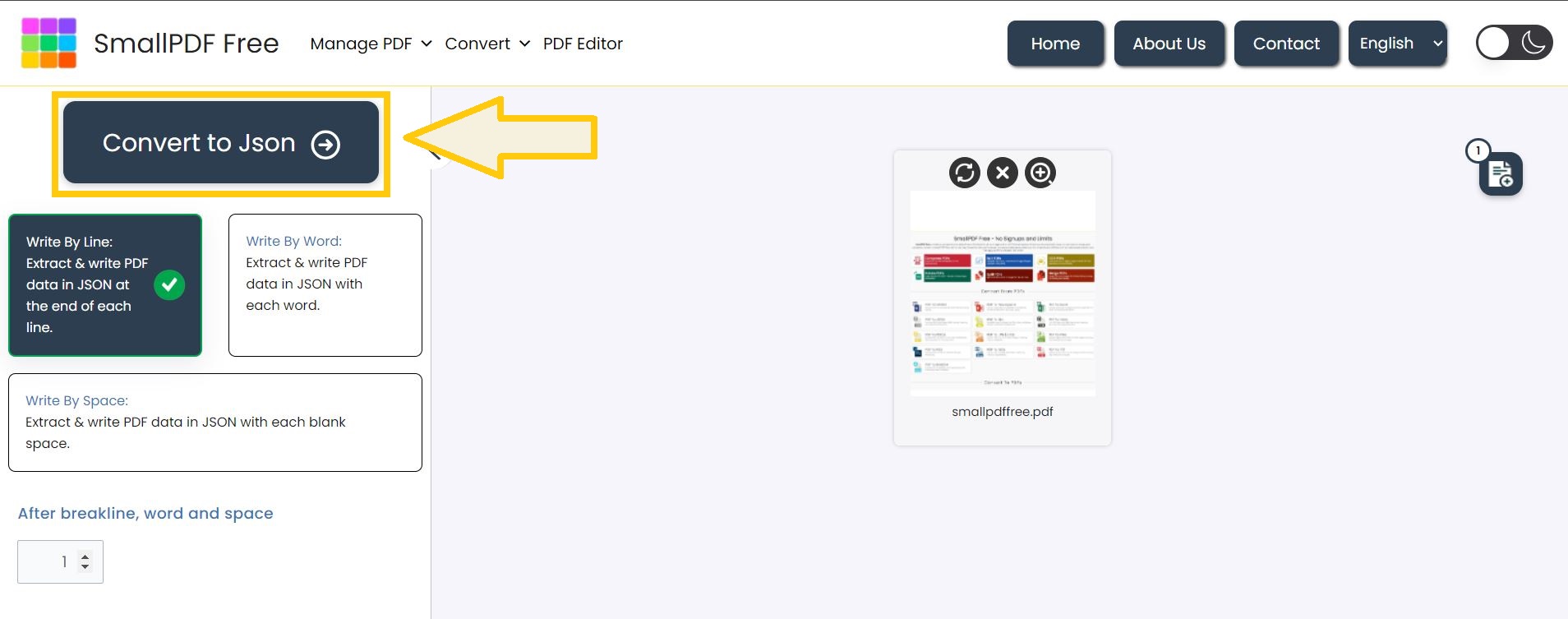
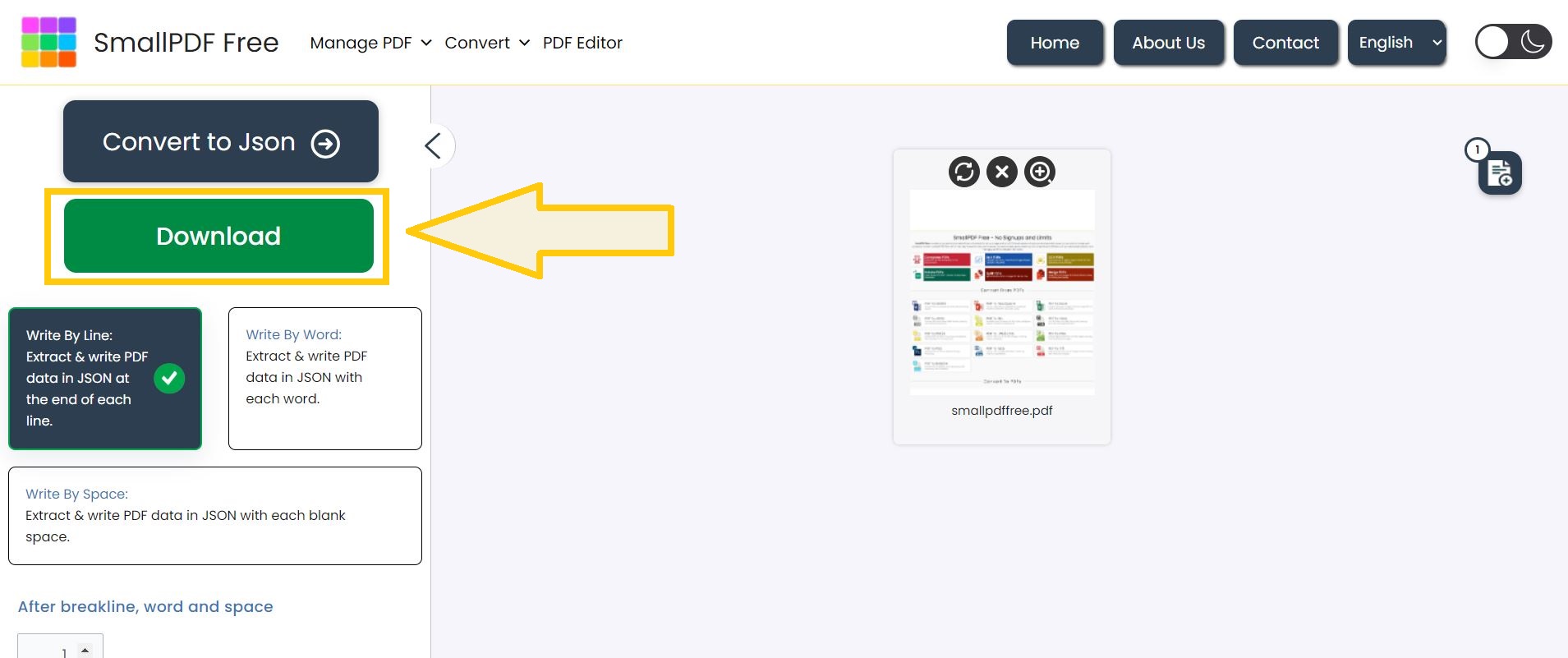
Pro Tips for Smooth Converting of JSON to PDF
Preprocess JSON Data: Normalize and clean the JSON file to remove unnecessary or redundant data before performing the conversion.
Optimize Performance: For large data sets, use multithreading or parallel processing.
Test Across Devices: Ensure generated PDFs look consistent across various devices and platforms.
Embed Fonts: Always Embed fonts to avoid rendering issues with special characters.
Implement Logging: Maintain logs for every conversion to trace errors or unexpected results.
Industry Insights is JSON to PDF Conversion
Case Study 1: Adobe’s Approach to Data-PDF Conversion
Adobe’s PDF Embed API simplifies the rendering process of structured data such as JSON into PDF. Such a cloud-based service raises the significance of error handling and security in PDF generation workflows.
Case Study 2: Google Developers Best Practices
Google suggests adopting JSON-to-HTML-to-PDF workflows for scaling solutions. In their documentation for developers, they have specifically mentioned how Google Docs and Sheets leverage such methodologies in generating formatted PDF exports for users.
Conclusion
While Converting JSON to PDF appears to be a pretty simple task, it actually involves the challenges of data mapping, formatting, handling large datasets, and security. All these can be effectively overcome with the correct tools and techniques.
For business as well as developers, streamlining the Workflow of JSON to PDF isn’t just about efficiency, but it’s about ensuring that the output is reliable, accurate, and professionally presented. Start implementing the above solutions, and you would see a significant improvement in your JSON-to-PDF processes.
By understanding and addressing these challenges, you ensure not only a better user experience but also an optimized and scalable workflow.
FAQ: JSON to PDF Conversion
Q1: Which library is best for JSON-to-PDF conversion?
A1: ReportLab is the best choice for Python. PDFKit or jsPDF for JavaScript is the way to go.
Q2: Is it possible to directly convert from JSON to PDF?
A2: It’s very difficult. Sometimes easier to convert JSON first to HTML, then to PDF.
Q3: How should I deal with errors in the JSON files?
A3: Use JSON validation tools, for example, AJV or schema validators to confirm that all the fields are present and correctly formatted.
Creating a seamless JSON to PDF conversion pipeline enables you not only to streamline workflows but also to create more reliable deliverables. Follow along, leverage these suggested tools, and step into these challenges head-on to build a robust solution!
References:
JSON to PDF in Python: A Developer’s Guide
How to Convert JSON to PDF Online Without Losing Data Integrity

